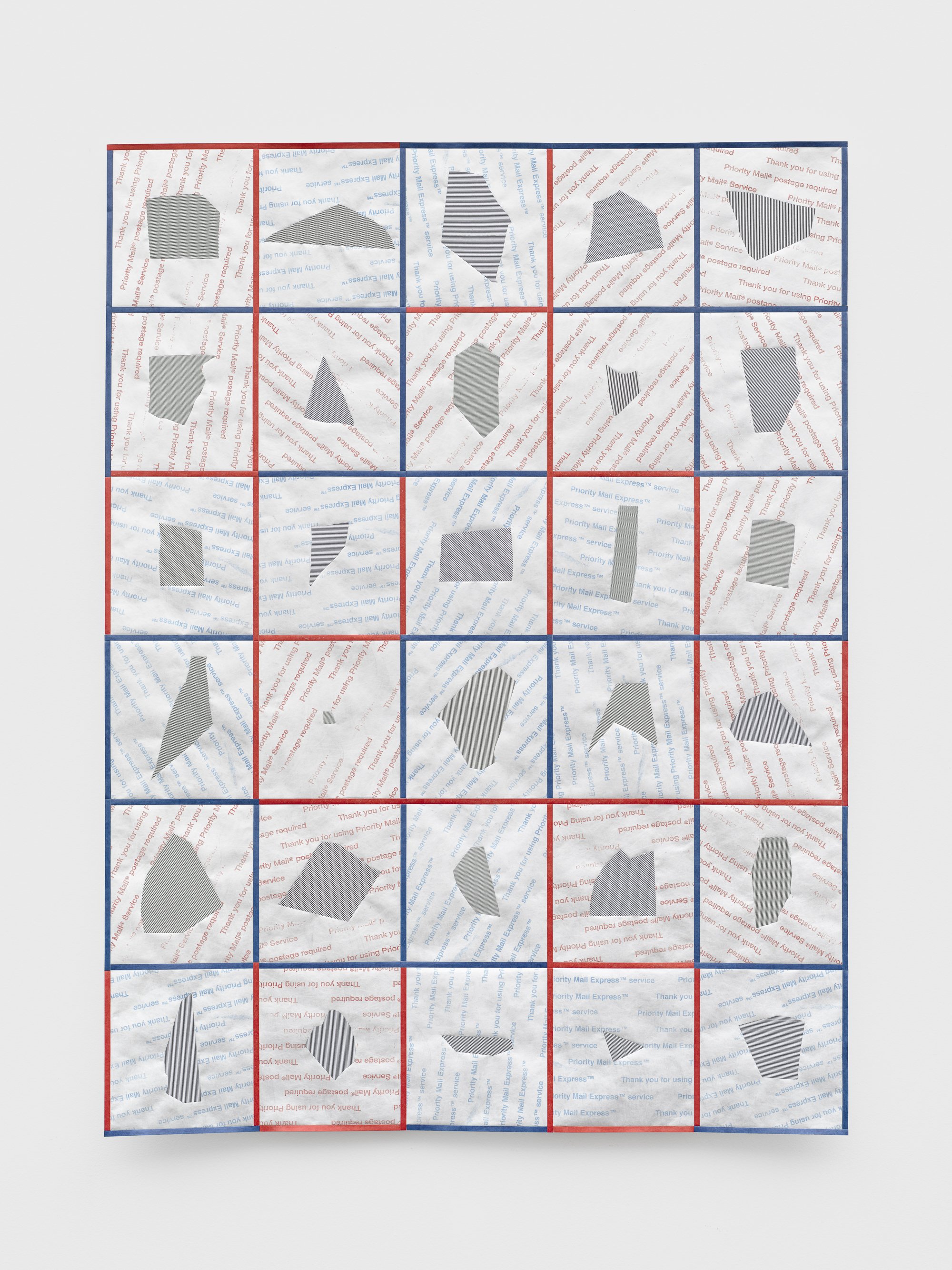
Forwarding (I–XI)
Forwarding (I-XI), 2016, electrostatic printed paper, printed Tyvek, each 44 in x 33 in x 1/4 in
Forwarding I, 2016
Forwarding II, 2016
Forwarding III, 2016
Forwarding IV, 2016
Forwarding V, 2016
Forwarding VI, 2016
Forwarding VII, 2016
Forwarding VIII, 2016
Forwarding IX, 2016
Forwarding X, 2016
Forwarding XI, 2016
I harbor an ongoing fascination with a set of 306 abstract shapes drawn, cut, and sewn into a Crazy Quilt sometime between 1885 and 1895 by New Jersey quilt-maker Rachel Blair Greene. In Correspondence from the Piecework project I re-created or “re-performed” my own version of her quilt but was unsatisfied with the result. A couple of years later I set out to create a new project which would isolate these shapes and make it possible to see them clearly and in relationship to one another. I am fundamentally interested in the shapes themselves: both individually and in the way one connects with another. They have such surprising character that I imagine them to have been created democratically, each considered to be of equal value.
I didn’t realize when I started that I would produce an ongoing series of projects, now grouped under the shared title Forwarding, that revisit these shapes in a variety of ways. The first of these is Forwarding: I-XI and it’s made from USPS Express and Priority Tyvek mailers and two types of ordinary paper printed with several pinstripe security patterns. These specific patterns come from security envelopes used for communications between corporations and customers (common enough in the days before online payments became the norm). Both sides of each paper or Tyvek material are used in various ways to create a panel-in-lattice structure that holds all the shapes taken from Greene's crazy quilt.
Making a crazy quilt often results in leftover and awkward in-between shapes that are adopted by default but don’t feel intentionally drawn. In the case of this quilt no shape feels more or less worthy of attention than any other. I was shocked, and still am, to find no favorites among them.
Small prototypes led to a decision to make eleven separate pieces and use a random number generator to make formal decisions and run the materials and structure through as many permutations as possible. The elements of the lattice-work itself could vary in color and in the way they overlap. The shapes could be patterned, colored or white; the whites, warm or cool; paper or Tyvek. The grounds could be any of these and could include the printed information found on either side of the Tyvek mailers. The complete series consists of ten variations leading to an eleventh piece in which each rectangle was assigned a style from one of the previous ten pieces.
For more on the Forwarding projects visit Forwarding Related Materials.
All Image Credits: Tom Powel Imaging















